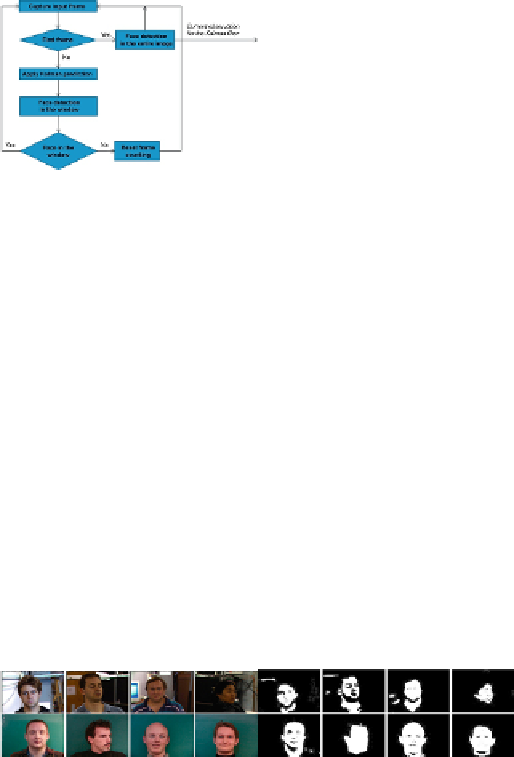Image Processing Reference
In-Depth Information
where
Q
k
=
E
[
w
k
w
k
T
],
R
k
=
E
[
v
k
v
k
T
] and
P
0|0
=
E
[
x
0
x
0
T
]. The face detector and the tracker are used
FIGURE 10
Overall face-tracking algorithm.
7 Experiments
7.1 Face-Detection Experiments
7.1.1 Experiment 1
To form an experimental dataset and evaluate the effectiveness of the proposed color face-
detection method in terms of face-detection performance, a total of 7266 facial images from
CMU-PIE; for one subject, the images had different expressions and 21 lighting variations with
"room lighting on" conditions. From Color FERET, a total of 4179 face images of 872 subjects
were collected; for one subject, the images included five different pose variations. Spe-cifically,
the pose angles were in the range from − 45
°
to + 45
°
. From IMM, a total of 240 face images
of 40 subjects were collected; for 1 subject, the images include 6 different pose variations. Spe-
ciically, the pose angles were in the range from − 30
°
to + 30
°
. The face images used in Exper-
iment 1 were scaled down to their one-fourth size.
Figure 11
shows some of the test images
and SM results.
FIGURE 11
Eight of the 7266 images in Experiment 1 and skin map segmentation results.
To evaluate the performance of the face-detection algorithm, a number of detection rates
and false alarms are used. The detection rate is defined as the ratio between the number of
faces correctly detected and the actual number of faces, while a false alarm is a detection of the
face where there is no face.
Table 1
shows the results of the MS-RNN face-detection method
on CMU-PIE, color FERET, and IMM databases.

Search WWH ::

Custom Search